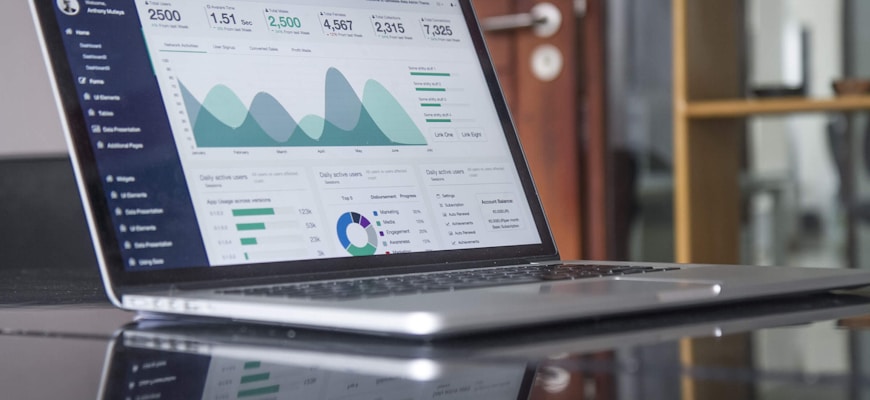Exploring the Best Charting Tools for Technical Analysis

- Understanding the importance of charting tools in technical analysis
- Comparing popular charting tools used by traders and analysts
- Exploring the features and capabilities of top charting software
- How to choose the right charting tool for your technical analysis needs
- Tips for maximizing the effectiveness of charting tools in trading
- The future of charting tools and advancements in technical analysis technology
Understanding the importance of charting tools in technical analysis
Technical analysis relies heavily on charting tools to help traders and investors make informed decisions about the future direction of asset prices. These tools provide a visual representation of historical price data, allowing analysts to identify patterns, trends, and potential areas of support and resistance. By using charting tools, traders can gain valuable insights into market behavior and improve their overall trading strategies.
One of the key benefits of charting tools is their ability to simplify complex data into easy-to-read charts and graphs. These visual representations make it easier for traders to spot trends and patterns that may not be as apparent when looking at raw data. By using charting tools, traders can quickly analyze price movements, identify key levels of support and resistance, and make more informed trading decisions.
Another important aspect of charting tools is their ability to help traders identify potential entry and exit points for trades. By analyzing historical price data and using technical indicators, traders can pinpoint optimal times to buy or sell an asset. This can help traders maximize their profits and minimize their losses, leading to more successful trading outcomes.
Overall, charting tools play a crucial role in technical analysis by providing traders with the visual tools they need to analyze market data effectively. By using these tools, traders can gain valuable insights into market trends, identify potential trading opportunities, and make more informed decisions about their trading strategies.
Comparing popular charting tools used by traders and analysts
When it comes to analyzing financial data, traders and analysts rely on popular charting tools to make informed decisions. Some of the most commonly used charting tools in the industry include TradingView, MetaTrader, and Thinkorswim. Each of these tools offers unique features and functionalities that cater to different trading styles and preferences.
TradingView is a web-based platform that provides a wide range of charting tools and technical indicators. It is known for its user-friendly interface and social networking capabilities, allowing traders to share ideas and collaborate with other users. MetaTrader, on the other hand, is a popular trading platform that is widely used by forex traders. It offers advanced charting capabilities, as well as automated trading features through its Expert Advisors.
Thinkorswim, which is owned by TD Ameritrade, is another popular charting tool that is favored by many traders and analysts. It offers advanced charting tools, customizable studies, and a wide range of technical indicators. Additionally, Thinkorswim provides access to a variety of markets, including stocks, options, futures, and forex.
Overall, each of these charting tools has its strengths and weaknesses, and the best tool for you will depend on your individual trading preferences and needs. It is important to explore and compare these popular charting tools to find the one that best suits your trading style and helps you make informed decisions in the market.
Exploring the features and capabilities of top charting software
When exploring the features and capabilities of top charting software, it is essential to look for tools that offer a wide range of technical analysis options. These programs should have intuitive interfaces that make it easy to navigate through different charts and indicators. Additionally, the ability to customize charts to suit individual preferences is a crucial feature to consider when choosing charting software.
Top charting tools also provide users with access to a variety of drawing tools and technical indicators that can help identify trends and patterns in market data. These tools should enable users to conduct in-depth analysis of price movements and make informed trading decisions based on the information presented in the charts. Furthermore, the best charting software often includes features such as real-time data updates and alerts to keep users informed of any changes in the market.
In addition to functionality, it is important to consider the compatibility of charting software with other trading platforms and tools. The ability to seamlessly integrate charting software with trading platforms can streamline the trading process and provide a more comprehensive view of market data. This integration can also help users take advantage of advanced trading strategies and algorithms to optimize their trading performance.
Overall, exploring the features and capabilities of top charting software is essential for traders looking to enhance their technical analysis skills. By choosing software that offers a wide range of tools, customization options, and integration capabilities, traders can gain a competitive edge in the market and make more informed trading decisions.
How to choose the right charting tool for your technical analysis needs
When selecting a charting tool for your technical analysis needs, it is essential to consider several factors to ensure you choose the right one for your requirements. One critical aspect to consider is the type of assets you will be analyzing. Different charting tools may specialize in analyzing stocks, cryptocurrencies, forex, or commodities. Considering the type of assets you will be focusing on can help narrow down your options and find a tool that is optimized for your chosen market.
Another crucial factor to consider is the level of technical analysis expertise you possess. Some charting tools are more suited for beginners, offering user-friendly interfaces and basic technical indicators. In contrast, others are more advanced, providing a wide range of technical analysis tools and customization options for experienced traders. Assessing your skill level can help you find a charting tool that aligns with your knowledge and capabilities.
Additionally, it is essential to consider the features and functionalities offered by different charting tools. Some tools may provide real-time data, advanced charting capabilities, backtesting options, and integration with trading platforms. Evaluating the features that are important to you can help you choose a charting tool that meets your specific requirements and enhances your technical analysis process.
Furthermore, consider the compatibility of the charting tool with your devices and operating systems. Some tools may be web-based, while others require software downloads or mobile applications. Ensuring that the charting tool is compatible with the devices you use for trading can help you access real-time data and analysis conveniently.
In conclusion, selecting the right charting tool for your technical analysis needs requires careful consideration of the type of assets you will be analyzing, your technical analysis expertise, the features and functionalities offered, and the compatibility with your devices. By evaluating these factors, you can choose a charting tool that enhances your trading experience and helps you make informed decisions in the market.
Tips for maximizing the effectiveness of charting tools in trading
When using charting tools for technical analysis in trading, there are several tips that can help maximize their effectiveness. By following these guidelines, traders can make the most out of the information provided by these tools.
One tip is to familiarize oneself with the various features and functionalities of the charting tools being used. Understanding how to customize the charts, add indicators, and analyze different timeframes can provide valuable insights into market trends and potential trading opportunities.
Another important tip is to regularly update and adjust the settings of the charting tools to ensure that the data being analyzed is accurate and up-to-date. This can help avoid making decisions based on outdated information, which could lead to costly mistakes in trading.
It is also recommended to utilize multiple charting tools in conjunction with each other. By cross-referencing data from different sources, traders can confirm patterns and trends, leading to more informed trading decisions.
Additionally, keeping abreast of the latest developments in charting technology and incorporating new tools into one’s analysis can provide a competitive edge in the trading world. Staying curious and open to learning about new charting tools can lead to improved trading strategies and better results.
Lastly, practicing using charting tools regularly and honing one’s technical analysis skills can help traders become more proficient in interpreting data and making well-informed trading decisions. Consistent practice and dedication to mastering charting tools can lead to improved trading performance over time.
The future of charting tools and advancements in technical analysis technology
In recent years, charting tools have seen significant advancements in technology, leading to more sophisticated and user-friendly options for technical analysis. These developments have revolutionized the way traders and investors analyze market trends and make informed decisions.
One of the key trends in charting tools is the integration of artificial intelligence (AI) and machine learning algorithms. These technologies enable the tools to analyze vast amounts of data quickly and accurately, providing users with valuable insights into market behavior. Additionally, AI-powered charting tools can identify patterns and trends that may not be immediately apparent to human analysts, giving users a competitive edge in the market.
Another area of advancement in charting tools is the use of interactive and customizable features. Modern charting tools allow users to tailor their analysis to suit their specific needs and preferences. From custom indicators and drawing tools to personalized chart layouts, these features empower users to conduct in-depth analysis efficiently and effectively.
Furthermore, cloud-based charting tools have become increasingly popular due to their accessibility and convenience. With cloud-based tools, users can access their charts and analysis from any device with an internet connection, allowing for seamless collaboration and real-time updates. This flexibility is particularly valuable for traders and investors who need to stay informed and make decisions on the go.
Looking ahead, the future of charting tools is likely to see continued advancements in AI and machine learning capabilities, as well as further improvements in user experience and customization options. As technology continues to evolve, traders and investors can expect charting tools to become even more powerful and indispensable for conducting technical analysis in the fast-paced world of finance.



